25 Companion Plants for Potatoes (with Pictures)
-
Chris Dinesen Rogers
- Last updated:
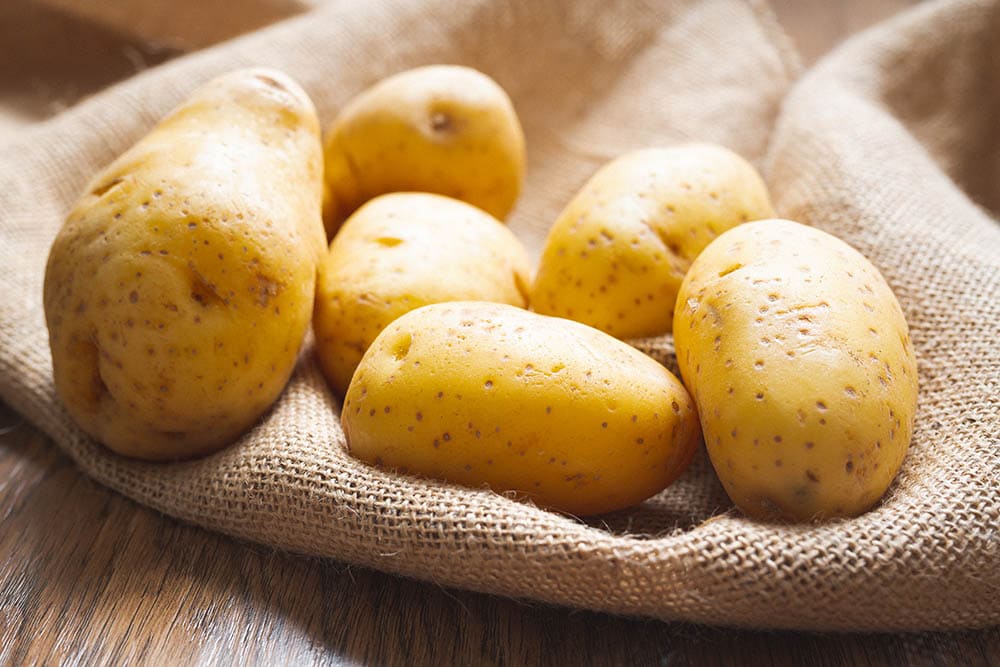
Who doesn’t love potatoes? They are probably one of the most versatile foods you can find. They are rich sources of potassium, magnesium, and fiber. Potatoes have gotten a bad rap recently. However, they don’t contain a lot of carbs, sugar, or even calories. Growing them at home is a simple way to ensure you’re eating only the best.
Placing the plants near companion species can make it easier to grow with fewer problems. Some attract pollinators, while others may improve the soil chemistry and ward off pests. Our round-up includes other food crops and ornamental species if you have a garden at home.
The 25 Great Companion Plants for Potatoes
1. Broccoli
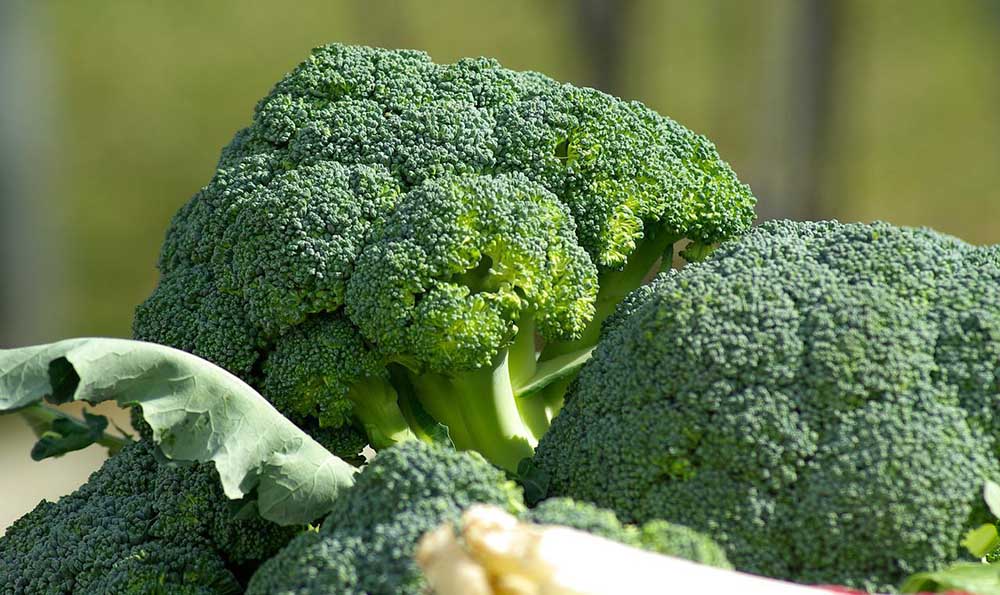
Potatoes have a wide USDA Plant Hardiness Zone range from 3–10. On the lower end of the spectrum, it will do well with other cool-season plants, such as broccoli. And how about a broccoli and cheese baked potato?
This plant pairs nicely with potatoes because it has shallow roots. You’ll find this point often determines compatibility.
2. Cabbage
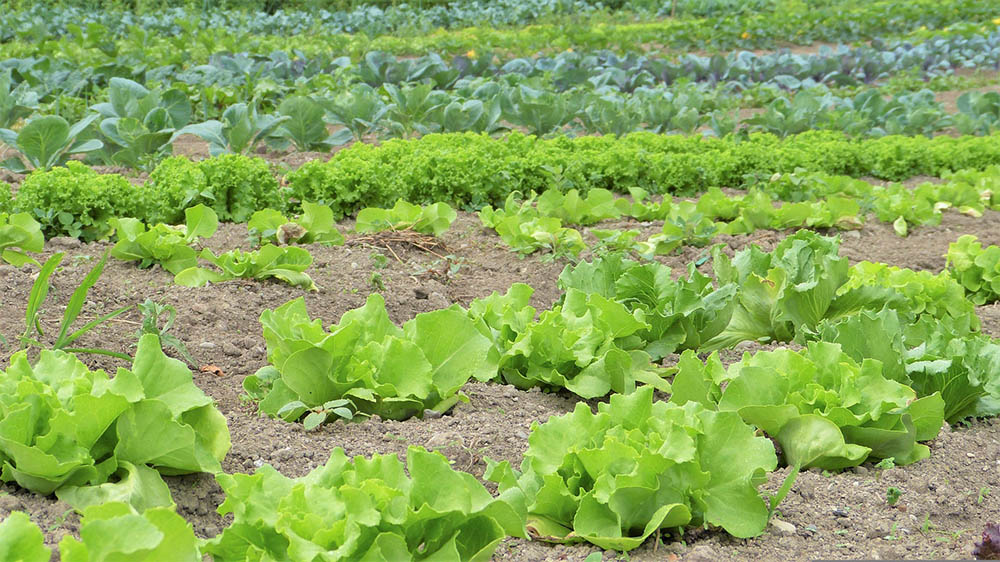
Cabbage has the same thing going for it as broccoli. The growth pattern of the two plants minimizes competition for space and the associated nutrients at the various soil levels. There’s also only one cabbage to deal with versus the bounty of potatoes growing underground. You should also plant cabbage in the ground before the potatoes to minimize competition for resources.
3. Cauliflower
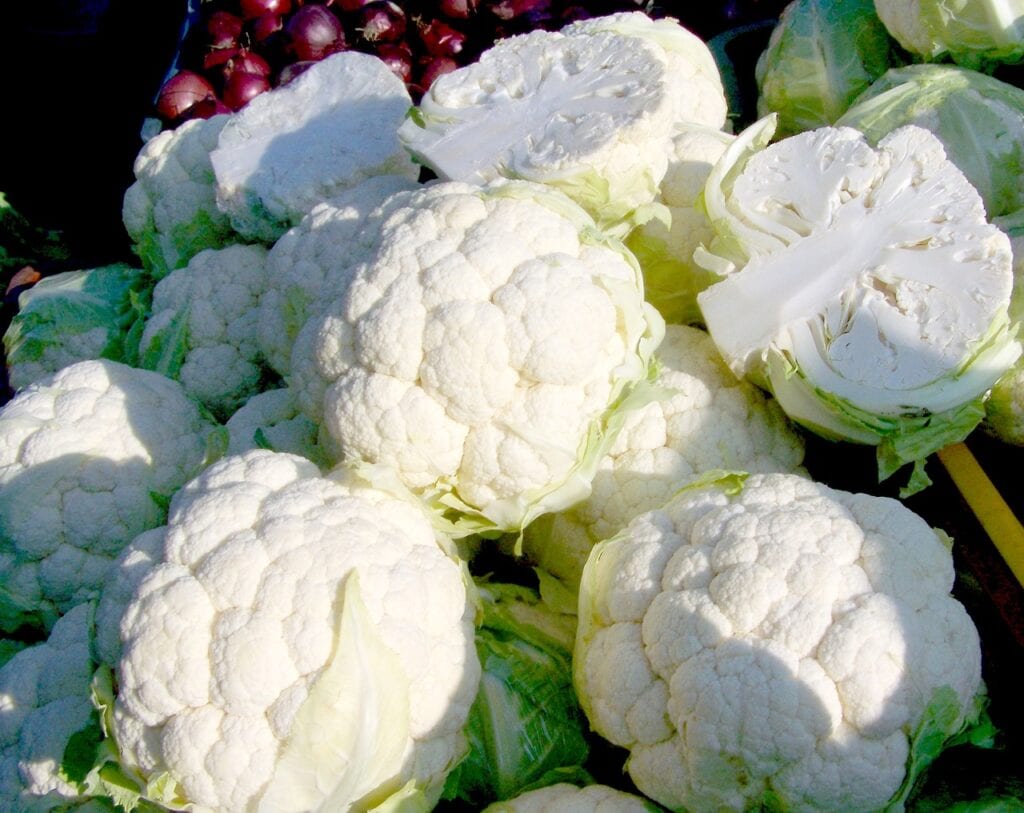
Cauliflower is another member of the Brassica family with similar properties that make it an excellent companion plant for potatoes. Both like sunny spots with well-draining soils. They will fare better if it’s slightly acidic. Since these vegetables are cool-season crops, you can get an early start with them in the spring as long as the ground isn’t wet.
4. Chives

Herbs, like chives, seem like a natural choice to plant with potatoes since you can use them to flavor the tubers after the harvest. The great thing about this plant is that it will keep giving and giving since it’s a perennial variety. Chives aren’t picky about where they live. Partial sun or full sun will suit them well. If you don’t want them to take over your garden, make sure to pluck off the flowerheads after blooming.
5. Cilantro
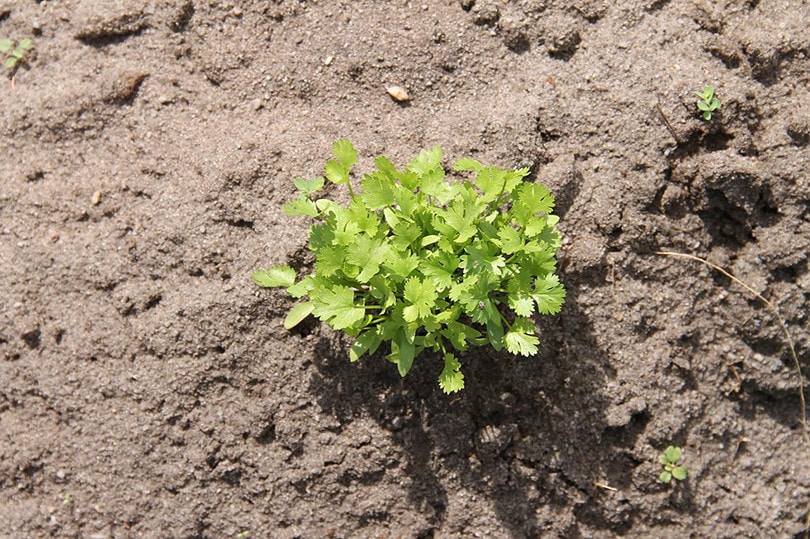
Cilantro prefers light, well-draining soils, just like potatoes. It is an annual plant that produces pretty white flowers if you let it bloom. You can extend its growing season and usefulness if you snip off the flowerheads after they appear. This plant does best with consistent watering, which, again, makes it an excellent companion for potatoes and their similar moisture needs.
6. Collard Greens

Collard greens, like others we’ve discussed, are cool-season varieties. They resemble cauliflower without its head. They aren’t fond of hot weather and prefer to stay moist to survive until the harvest. Unlike potatoes, you can get more than one crop from them, perhaps to accompany fall dishes made with the two vegetables.
7. Corn
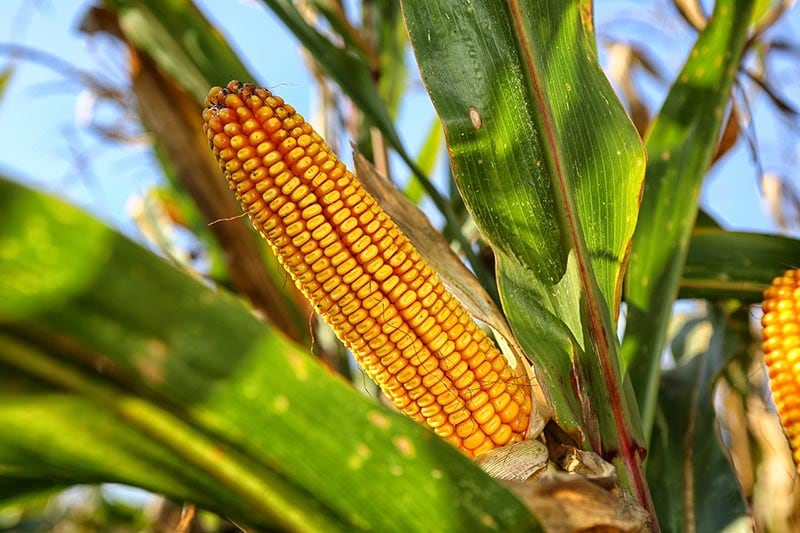
Potatoes and corn can grow together. However, the latter is a heavy feeder and may take more than its share of the nutrients. It can also shade potato plants, making placement an essential factor. Corn also likes slightly acidic soils. While you may think it’s shallow-rooted, that’s not the case. Both vegetables prefer well-tilled earth to lay down their deep roots.
8. Garlic
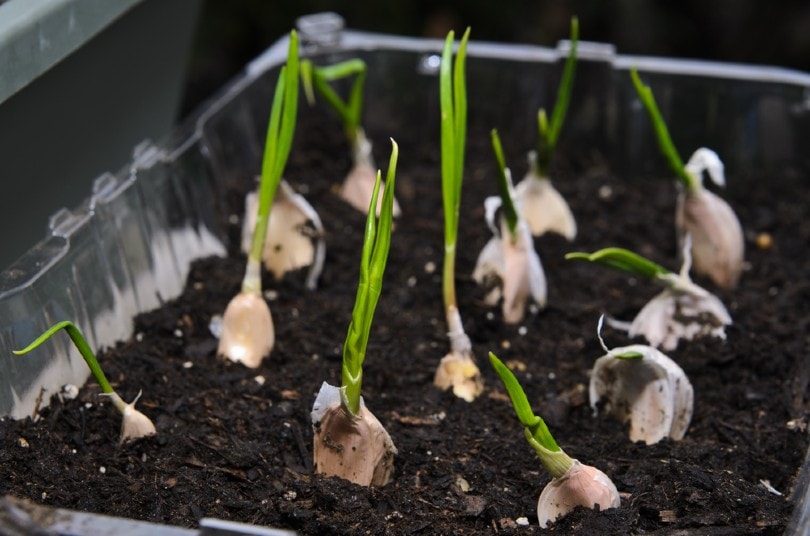
Garlic is an excellent choice to plant with potatoes because of the flavor it may lend to the tubers. You can get it in the ground in early spring, about the same time as the potatoes. It is easy to grow as long as the soil isn’t too wet or rich. It also doesn’t like the heat. Unlike the tubers, you might successfully overwinter them if it doesn’t get too cold.
9. Green Beans

Green beans and potatoes have two things in common: they like well-draining soils and lots of sun. Beans aren’t heavy feeders and prefer slightly acidic conditions, just like potatoes. While we’re discussing green beans, you can also try other varieties, such as pole beans or wax beans. They are shallow-rooted plants and won’t compete for space with the potatoes.
10. Horseradish

Horseradish might not be the most popular garden tuber, but it benefits potato plants. It can be a repellent against one of the worst potato pests: the Colorado potato beetle. It can, in turn, help to produce a more robust potato crop by improving its disease resistance without the pests weakening its defenses. It is a perennial plant that thrives in sunny conditions with well-drained soils.
11. Kale
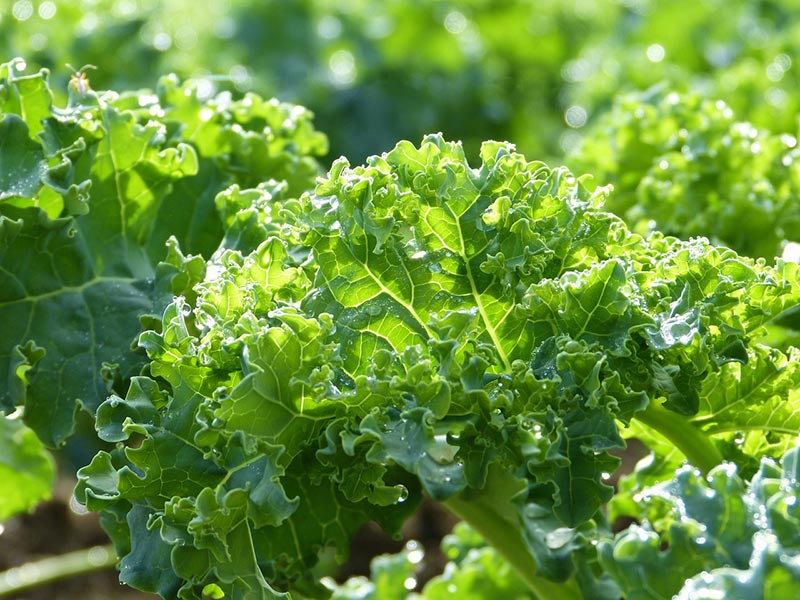
Growing kale is similar to collard greens, with both vegetables preferring similar soil and drainage conditions. Both are easy to grow and pack a nutrient punch, making them an excellent addition to your garden. You can plant kale later than potatoes, but it’ll keep producing until it gets close to fall and the first frost.
12. Kohlrabi

Kohlrabi is an early-season vegetable that grows best in cooler and moist conditions. Unfortunately, you shouldn’t plant it where other potato companion varieties have grown, such as kale or broccoli. You can grow it for a spring or fall harvest. Mulching will ensure that the growing plants have enough moisture to avoid stressing them.
13. Leeks

Leeks are an excellent companion plant, both in the ground and on the table. They are easy to grow and will tolerate the cold well. They are shallow-rooted and don’t form bulbs like others in their family. That makes them a good choice to plant alongside potatoes since they won’t compete for the same ground. You’ll find both short and long-season leek varieties.
14. Lettuce
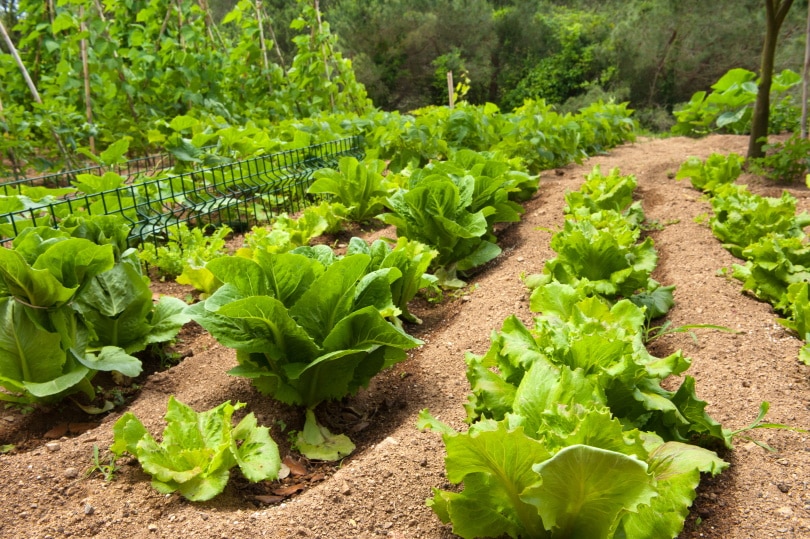
Lettuce is another cool-season vegetable that can produce multiple harvests thanks to its short growing time. It’ll do well with potatoes and won’t mind the shade that the larger varieties provide with their foliage. Lettuce prefers richer soils than potatoes. However, both plants thrive in slightly acidic soils. Lettuce also likes moist conditions, making mulching an option for these plants.
15. Parsley
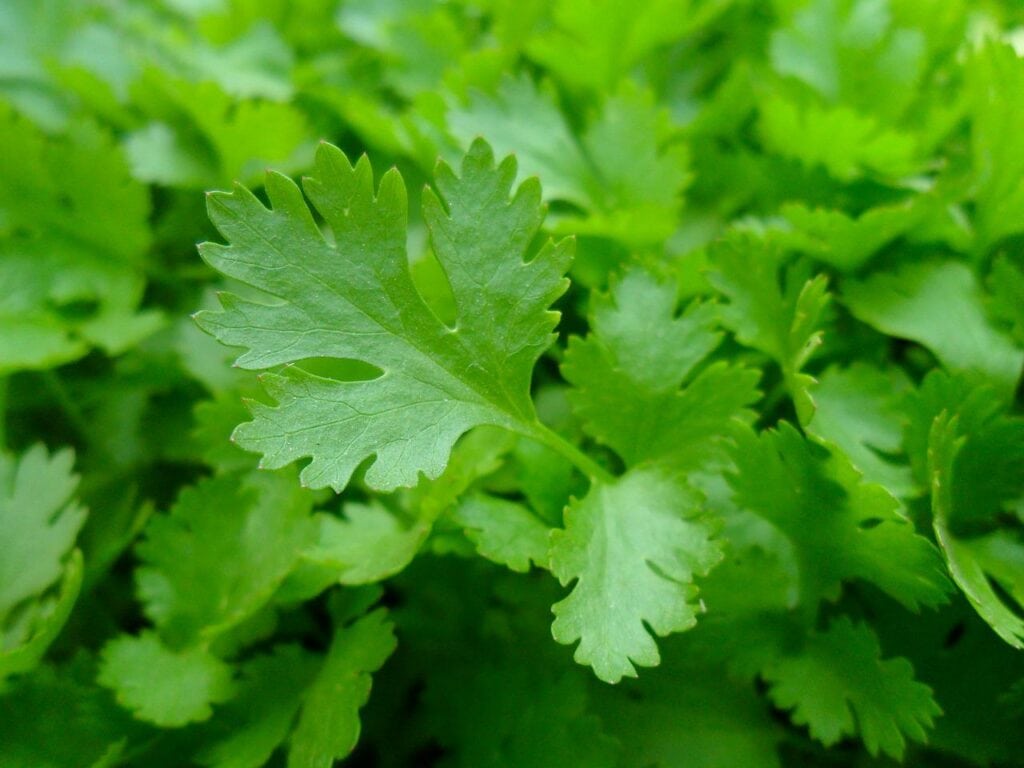
Parsley can handle the cooler spring weather like a champ, making it suitable to plant with potatoes. It likes the same well-drained, slightly acidic soils. It is a biennial herb that may self-sow, ensuring a continuous supply of this tasty flavor addition and garnish. Interestingly, it is an essential butterfly plant that acts as a host for the gorgeous Black Swallowtail Butterfly.
16. Rosemary
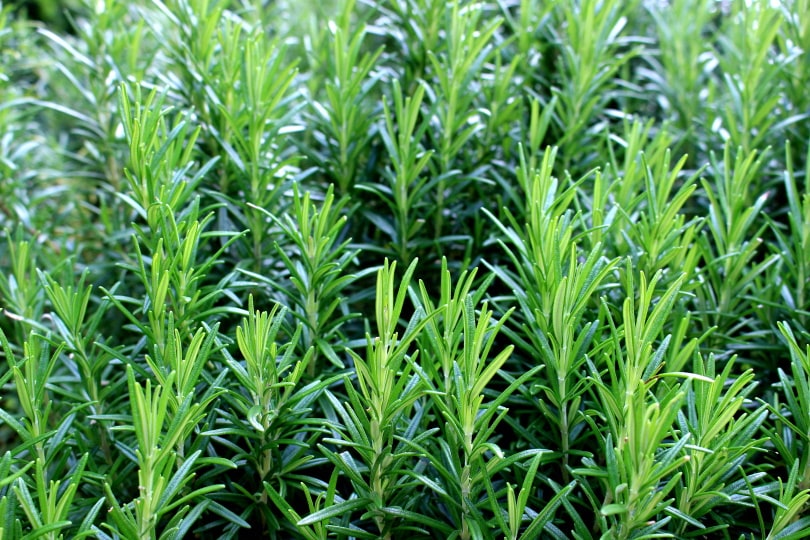
Rosemary and potatoes go together like peas and carrots. It’s best suited to plant with the tubers that grow in warmer hardiness zones where it is an evergreen perennial. It can handle poor soil conditions, as long as it is well-draining. This herb can be challenging to grow sometimes, particularly if you live in a cool climate.
17. Sage
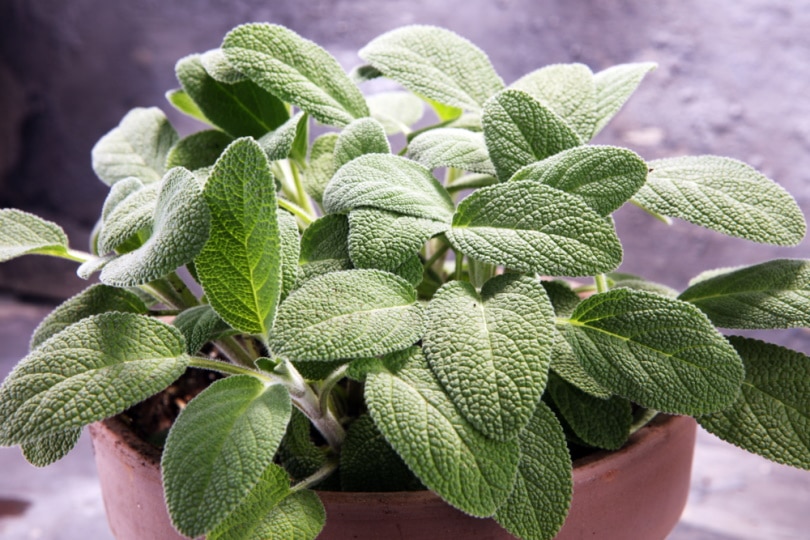
Sage is a robust herb that thrives in sunny, well-drained soils. It’s also an attractive plant that can add some interest to your vegetable garden. You can snip off leaves as you need them for cooking to help keep the plant in check. It is a perennial variety that will take on a thick, woody stem as it matures. You can also take cuttings from your outdoor plants for winter use indoors.
18. Spinach

Spinach isn’t a fussy plant to grow. Depending on the local climate conditions, it’ll take to partial shade or full sun. The vegetable prefers acidic soils and will take up any fertilizer you throw at it. It makes an excellent cover crop to keep weeds down in between rows of potatoes. However, you should mulch spinach to keep it from drying out during warm weather.
19. Sugar Snap Peas
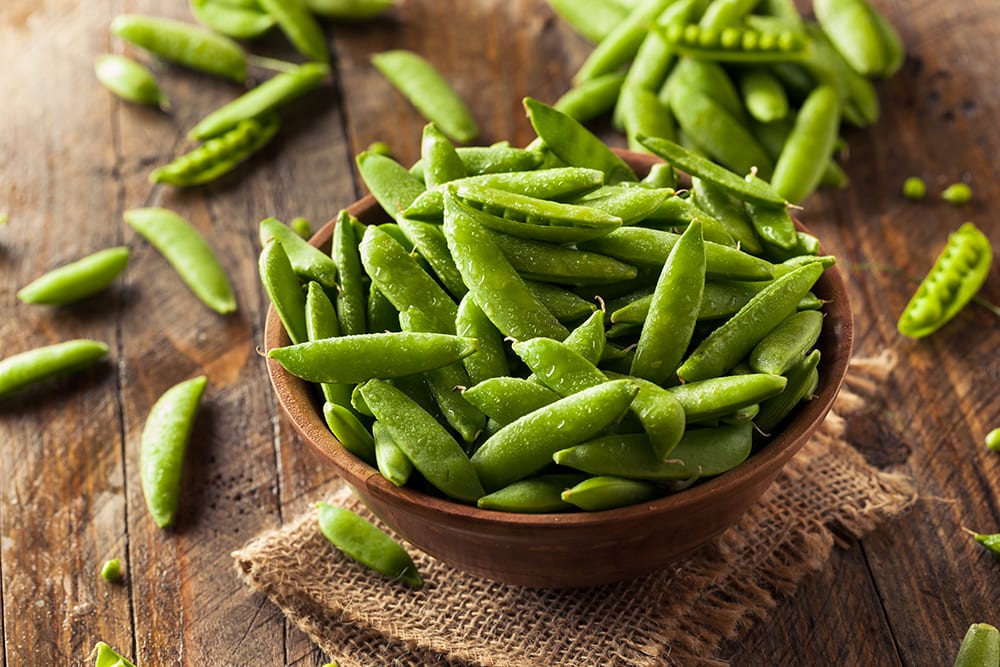
Sugar snap peas won’t compete excessively with potatoes for nutrients and may even enrich the soil with nitrogen. They like partial shade with a support to keep the vegetables off the ground. Peas like moist soils, which will suit the tubers, too. Slightly acidic conditions are ideal for both plants. Since you must hill potatoes occasionally, allow for some extra space near the delicate pea vines.
20. Thyme
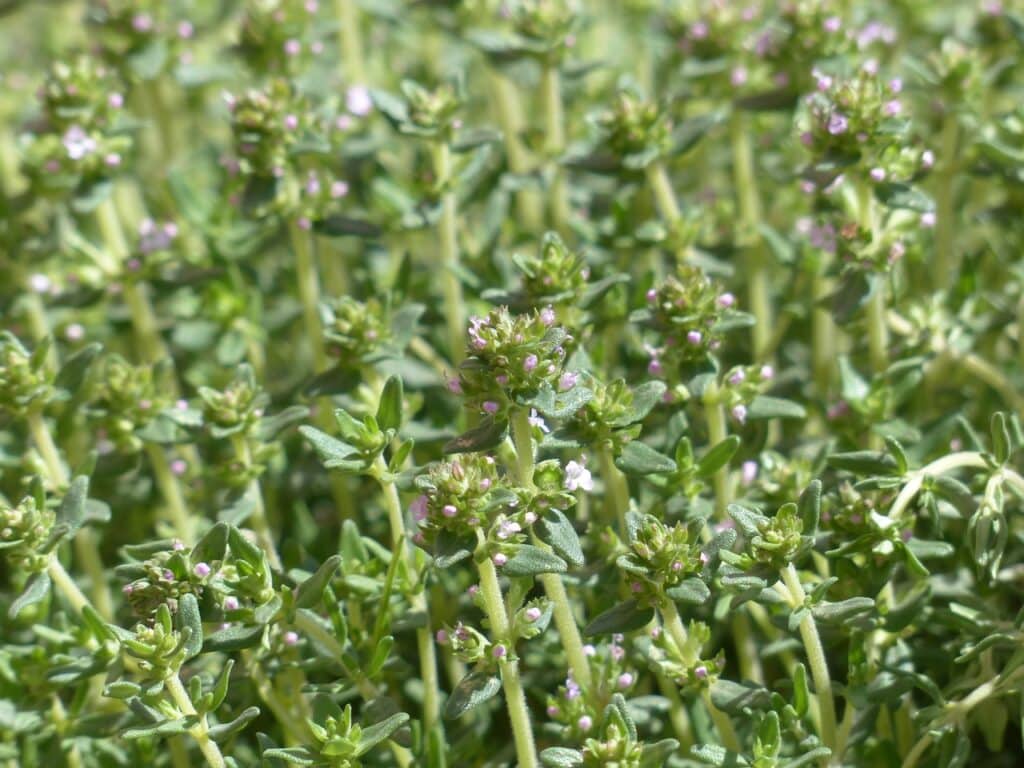
Thyme is one of our favorite herbs. Not only does it smell and taste good, but it also makes an attractive ground cover that you can use between rows in your garden or along a stone path. Like potatoes, this herb won’t tolerate heavy, clay soils. It is a perennial that will require little maintenance once it’s established. Just be sure not to plant it in low-lying areas.
21. Alyssum
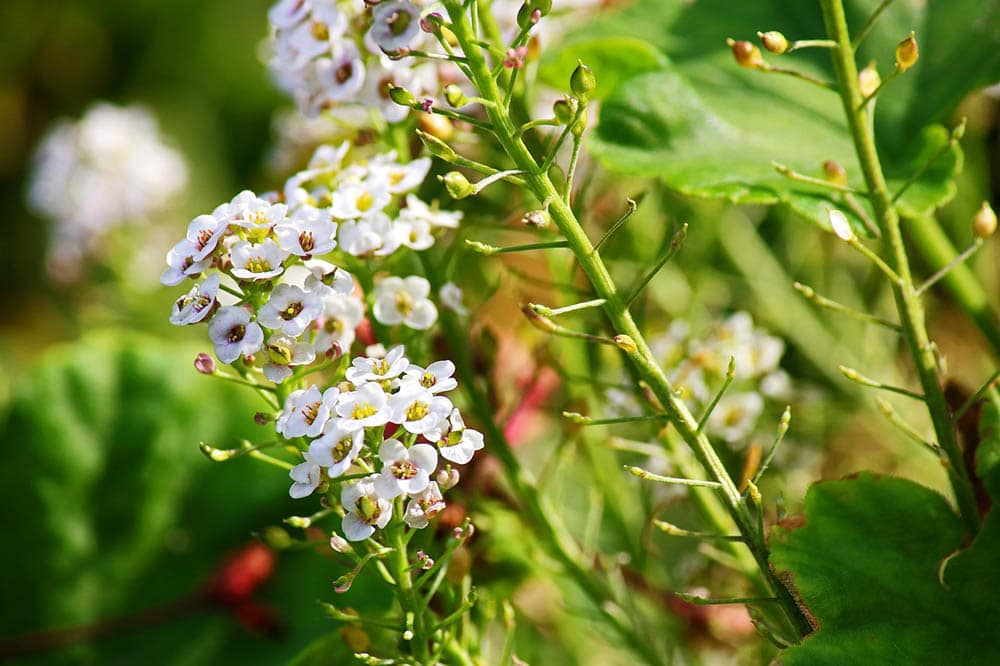
We love the look of English country gardens with the mix of flowers and produce. These last five entries fit the former role of adding some color alongside your potato plants. Alyssum is a perennial species that will fare well in plant hardiness zones 5–9. It prefers dry, slightly acidic soils. It has fragrant, showy blooms. It gets less than 8 inches high but spreads, hence its other moniker of the carpet flower.
22. Marigolds

Marigolds are attractive annual plants that will add some welcome color to your garden. We like to add them to keep gophers, squirrels, and deer away from our vegetables. It may not be the showiest of flowers. However, it will put out the welcome mat for birds, bees, and butterflies. If you raise it properly, you can even add it as a garnish to your potato dishes.
23. Nasturtiums

Nasturtiums are part of the Cabbage or Brassica family. You may also know it by its other common name of watercress. It’s a perennial plant that prefers wet conditions. You can grow it in a wide range of hardiness zones from 3–11. It is self-pollinating but will attract bees and other pollinators to your garden. It’s also another edible flower if grown for this purpose.
24. Petunias
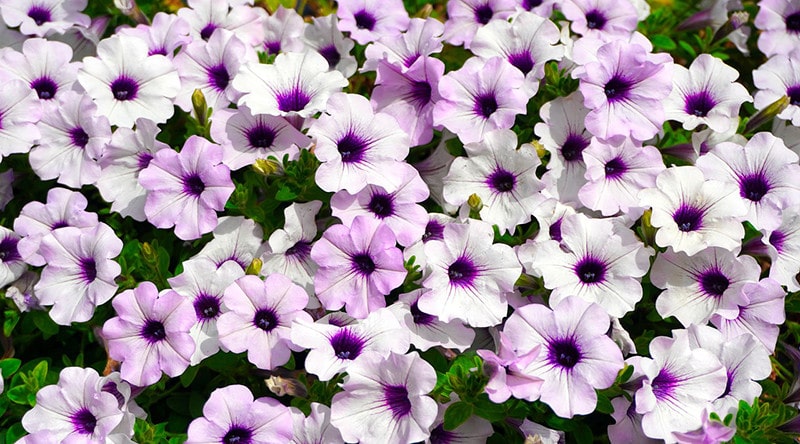
Depending on where you live, you can grow petunias as an annual or perennial cover crop. It’s a hardy plant that will bloom in late spring or early summer with showy, colorful flowers. It attracts hummingbirds, bees, and butterflies, making it an excellent choice for wildlife gardens. Its leaves are evergreen, providing year-round interest.
25. Radishes

Radishes are probably about the easiest plant you can grow. You’ll also have many varieties from which to choose. We suggest sticking with milder ones to avoid tainting the taste of your potatoes. You can plant radishes in between the rows of potatoes. They grow quickly as long as they are in well-draining soil in a sunny location. They have similar moisture needs as the potatoes.
Worst Companion Plants for Potatoes
Some plants just won’t work as companions for potatoes. Various reasons account for this disconnect, ranging from pests to disease risk to nutrient depletion. Sometimes, two species are incompatible because they feed on similar nutrients, such as tomatoes. Plants to avoid as companion plants for potatoes include:
- Asparagus
- Eggplant
- Fruit Trees
- Peppers
- Pumpkin
- Squash
- Tomatoes
Conclusion
As you’ve seen, potatoes are an excellent addition to your garden since you can plant them with many other species. Herbs such as rosemary and thyme may even add desirable flavors to the tubers, making their additions no-brainers. Nevertheless, we recommend rotating the species each growing season to reduce the risks of disease and harmful pests.
See also:
- 12 Companion Plants for Azaleas (with Pictures)
- 13 Companion Plants for Squash (with Pictures)
- 14 Companion Plants for Artichokes (with Pictures)
Featured Image Credit: HannaTor, Shutterstock
Contents
